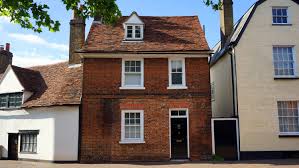There are so many benefits
of buying an older property, be it a quaint country cottage or a period
townhouse.
Often, older properties come with a certain charm and individuality that a new
build simply cannot offer. There’s a feeling of buying a little slice of
history all for yourself, knowing that your home has stood for many years
before you’ve gone in.
Maybe buying an older property presents some challenges, especially if it’s
been allowed to fall into disrepair, but the joy of making it vibrant again is
worth every second. An
article by Heritage House shows exactly what sort of wonderful results can
be achieved with the right approach.
There are plenty of pitfalls one can fall into when purchasing older properties
though. Firstly, you should ask yourself the questions we’ve listed in Should
You Invest in Property? ahead of buying a house. Once you’ve decided it is
for you, then make sure you’re asking these pertinent questions of the seller.
Is there evidence of damp?
Damp and mould can be a big problem in older properties, especially if they’ve
been empty for a while.
As well as being destructive to your house, it can affect your health too. The
NHS claims babies and children, as well as the elderly, can be at risk in a
damp house.
Whilst it’s worth asking the question, a full survey can also uncover evidence
of damp you may have missed, or that has been hidden prior to selling.
How up to date is the heating system?
One great way to combat damp and mould is a well-heated house, but that’s not
the only benefit of checking the heating system. If it is old and hasn’t been
checked, then a new installation might be the way to progress in your new home.
HomeServe explains how an old boiler
often needs to be replaced with a newer model, especially if it hasn’t been
updated in over 15 years. Not only will this ensure that you aren’t spending
money on costly repairs, but a new model could also save you money on energy
bills.
Suffering a boiler breakdown can be a huge problem too, with Moneywise
speculating the average repair bill is £245, or as much as £725m across the
UK
annually.
Has the loft been insulated?
Leading on from heating is insulation and heat retention and if everything is
working fine then you’ll want to understand about your potential new home’s
insulation. Often, it is hard to gain loft access on a viewing of a house,
especially in an older property with high ceilings, small loft hatches or other
such obstructions.
Understanding if your loft is insulated could save you a lot of money further
down the line as you could save as much as £250 per year.
Is the wiring safe?
Another significant cost when moving into a new home could be a rewire, so it
is important to ensure you ask about the electricity supply. Has it been
rewired in the past? Do all the sockets work and if not, why not? The same
question can be asked of the lighting too.
A full rewire is a hidden cost that few buyers will consider, but it could run
into the thousands and being aware of the problem will prevent a big bill.
Is there any asbestos in the property?
Last, but certainly not least, ask about asbestos. It was a common building
product once upon a time and may have been used in the construction of your
older property.
The Health and Safety
Executive reports that 20 tradesmen die every week as a result of past
exposure to asbestos.
For more information on the country’s real estate industry we have all the
latest news here on Property
Insider.


